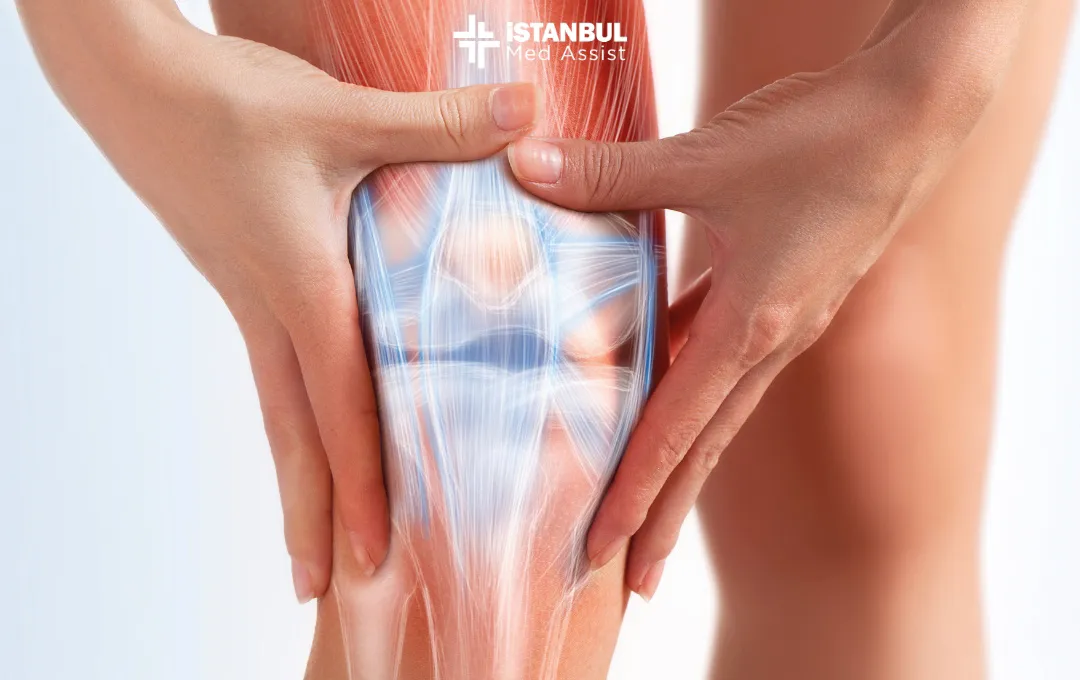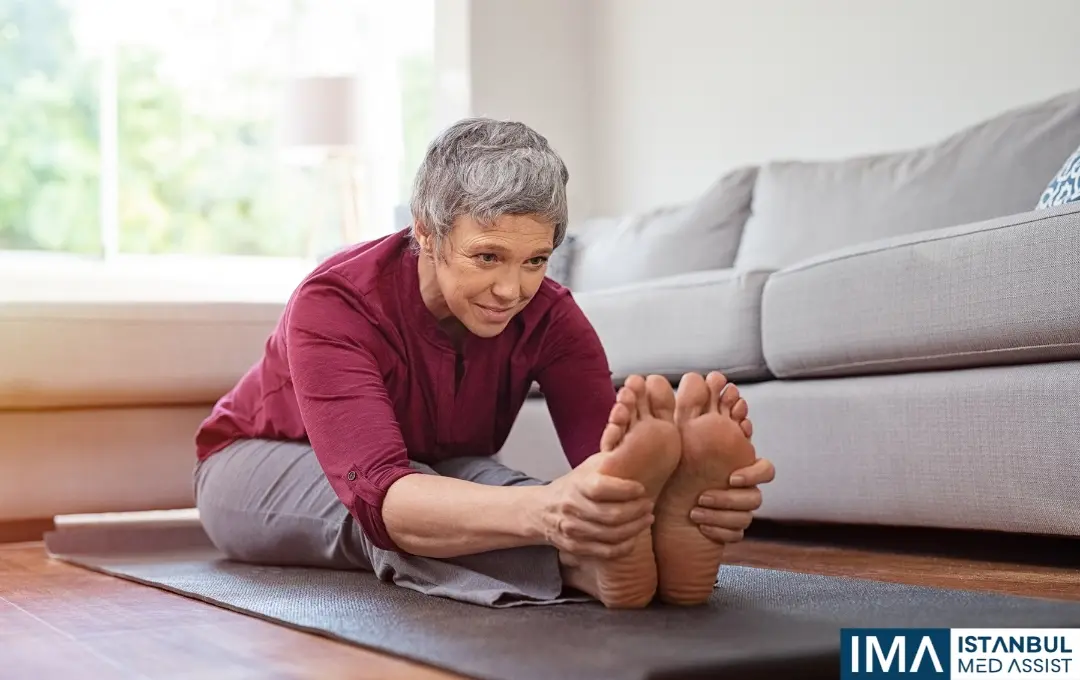What is arthroscopy?
Get a Free Consultation
Overview
Arthroscopy is a surgical procedure in which the joint is viewed through a small camera.
The word originates from Greek and refers to looking inside the joint. Arthroscopy helps to better diagnose and treat joint problems in joints such as the knee, wrist or ankle, shoulder, elbow, hip, and hand by giving the surgeon a clear picture of the inside of the joint. According to the American Orthopaedic Sports Medicine Association, over 4 million arthroscopies are performed worldwide yearly. An arthroscope is a narrow, long tube connected to a light and a fiber optic video camera and is extended into the joint through small incisions. The arthroscope causes less damage than open surgical procedures and has a lower risk of complications.
At Istanbul Med Assist, we are committed to mediating state-of-the-art methods for arthroscopic procedures.
Who performs arthroscopy surgery?
Orthopedic surgeons perform arthroscopic procedures. These doctors specialize in conditions that affect the musculoskeletal system.
What are the types of arthroscopy?
Arthroscopy is a medical method that can be used to examine joints in various regions diagnose and treat disorders.
- Shoulder arthroscopy: It is applied for rotator cuff muscle tears, osteophytosis (bone formations), shoulder impingement syndrome, osteoarthritis, and labrum tears.
- Elbow arthroscopy: It is applied in cases such as synovitis, osteoarthritis, rheumatoid arthritis, loose bone and cartilage, elbow dislocations and fractures, tennis elbow and golfer's elbow.
- Hand and wrist arthroscopy: It is applied for ligament tears, chronic wrist pain, ganglion cysts and wrist fractures.
- Hip arthroscopy: Used for femoroacetabular impingement, hip labrum tears, synovitis, dysplasia, tendon tears, and nerve compression.
- Knee arthroscopy: It is applied for joint inflammations such as synovitis, bone fracture, meniscus tear, anterior cruciate, and internal lateral ligament tears.
- Foot and ankle arthroscopy: It is applied for ligament tears, ankle fractures, and nerve compression.

Who can have arthroscopy surgery?
Acute or chronic disorders of the bones and joints can be treated with arthroscopy. Treatment of bone and joint diseases primarily includes weight loss, exercise, medication and steroid injections, physical therapy, and rest. However, when these treatments fail, arthroscopy is recommended.
The main conditions in which arthroscopy is applied may be as follows:
- Inflammation of the tissues surrounding the knee, shoulder, wrist, ankle and elbow joints, such as synovitis,
- Loose pieces of bone or cartilage in the joint,
- Damage or tearing of cartilage,
- Tendon or ligament injuries,
- Shoulder impingement, shoulder dislocation, carpal tunnel syndrome, and knee instability.
- Some bone-joint problems caused by arthritis can also be treated with arthroscopy.
Preparing for surgery
Before having an arthroscopy, you’ll usually be given an appointment to attend a preadmission clinic. During your appointment, your general health will be assessed to make sure you’re ready for surgery.
You’ll also be given information about issues like:
- What and when you are allowed to eat and drink on the day of surgery;
- Whether you should stop or start any medications before surgery;
- How long does it take for you to recover from surgery? Whether you’ll need to do rehabilitation exercises after surgery;
The surgical team will explain the benefits and risks associated with having an arthroscopy.
You’ll be asked to sign a consent form. This confirms that you agree to have the operation and that you understand what’s involved, including the risks and benefits.
What are the advantages of arthroscopy?
Arthroscopy surgery is a procedure performed with a minimally invasive technique (involving minimal incisions). Therefore, it has many advantages compared to other open surgeries.
These advantages are mainly:
- Less pain,
- Less blood loss,
- Minimal scarring,
- Faster recovery,
- No hospitalization or short-term hospitalization,
- Return to daily life in a short time,
- It is a return to physical activity in a short time.
Risks
Arthroscopy is a very safe procedure, and complications are uncommon.
Problems may include:
- Tissue or nerve damage. The placement and movement of the instruments within the joint can damage the joint's structures.
- Infection. Any type of invasive surgery carries a risk of infection.
- Blood clots. Rarely, procedures that last longer than an hour can increase the risk of blood clots developing in your legs or lungs.
During the procedure
The type of anesthesia used varies by procedure.
- General anesthesia. Depending on the length of the operation, it may be better for you to be unconscious during the procedure. General anesthesia is delivered through a vein (intravenously).
- Regional anesthesia. The most common form of regional anesthesia is delivered through a small needle placed between two of your spine's lumbar vertebrae. This numbs the bottom half of your body, but you remain awake.
- Local anesthesia. Numbing agents are injected below the skin to block sensation in a limited area, such as your knee. You'll be awake during your arthroscopy, but the most you'll feel is pressure or a sensation of movement within the joint.
The arthroscopy operation
Antibacterial fluid is used to clean the skin over the affected joint. A small incision, a few millimeters long, is then made so the arthroscope can be inserted. Additional incisions will be made so that an examining probe or other fine surgical instruments can be inserted.
The surgeon may fill the joint with a sterile fluid to expand it and make it easier to view. They’ll be able to see inside your joint using an eyepiece or a video screen. If possible, during the procedure, they’ll repair any damaged areas and remove any unwanted tissue. Your surgeon will then examine the inside of the joint using the arthroscope. If necessary, they’ll remove or repair any problem areas using surgical instruments inserted through the additional incisions.
After the procedure, the arthroscope and any attachments are removed, along with any excess fluid from the joint. The incisions are usually closed using special tape or stitches and covered with a sterile dressing.
How long does it take to recover?
How long it takes to recover after an arthroscopy can vary, depending on:
- the type of surgery you had
- the type of work that you do
- your general health
Some people feel better after a few days, while others may not be back to normal for several months.
Recovery advice
It’s likely that you’ll feel tired and light-headed after having a general anesthetic. This means you’ll need to ask a responsible adult to take you home and stay with you for the first 24 hours after surgery. Most people will recover from the effects of the anesthetic within 48 hours.
Do
- keep dressings as dry as possible – cover them with a plastic bag when having a shower or bath
- elevate the joint, if told to do so
- carry out any joint exercises that have been recommended for you
- apply ice packs to help with the swelling when you get home, if you’re advised to do so If your dressings do get wet or fall off, they’ll need to be replaced. The dressings can usually be removed after 5 to 10 days.
Your wounds should start to heal within a few days. If non-dissolvable stitches were used to close them, these will need to be removed after a week or two. This will usually be done by a practice nurse at your local GP practice.
You’ll normally be asked to attend a follow-up appointment a few weeks after the operation. Here you’ll discuss the results of the surgery, your recovery, and any additional treatment you may need.
- Get Free Consultation
- Access to skilled surgeons
- Receive personalized care
- Benefit from ongoing support
Join to our newsletter

Authorized by the Ministry of Health and Tourism in Turkey








